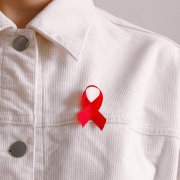Machine learning takes a village: Assessing neighbourhood-level vulnerability for an overdose and infectious disease outbreak
Multiple areas in the United States of America (USA) are experiencing high rates of overdose and outbreaks of bloodborne infections, including HIV and hepatitis C virus (HCV), due to non-sterile injection drug use. We aimed to identify neighbourhoods at increased vulnerability for overdose and infectious disease outbreaks in Rhode Island, USA. The primary aim was to pilot machine learning methods to identify which neighbourhood-level factors were important for creating “vulnerability assessment scores” across the state. The secondary aim was to engage stakeholders to pilot an interactive mapping tool and visualize the results. Read more










